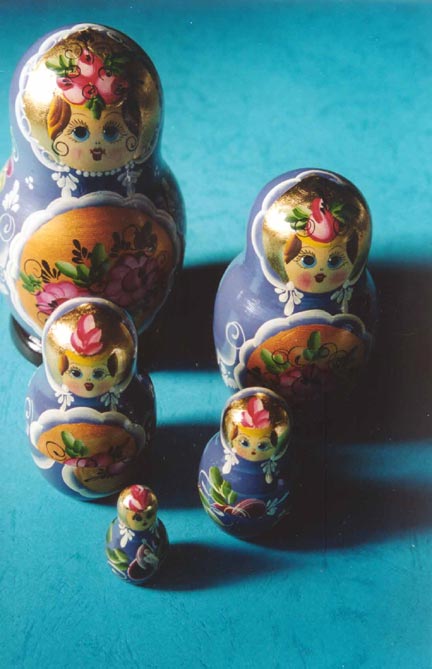 |
 |
|
Marcellin College
Our Cultural Heritage
Stacking Russian Dolls
My name is Alex. I came to New Zealand from Russia when I was five years old. When we emigrated to New Zealand, my mother brought some Russian stacking dolls - which we call Matryoshki - with her to remind her of home. They are displayed on a shelf in our living room just as they would be in Russia, for although they are dolls, they are like models to look at, and are not for children to play with.
Matryoshki originated in the small town of Krasnogorsk, about 90 miles from Moscow. This was in the late 1400ís when Russia was ruled by King Ivan Grosny.
My grandparentsts still live in Krasnogorsk, and I went to visit them three years ago. It is a little old town by a big forest. Wolves still live in this forest. The roads are made of gravel.
When I went there it was very cold and I had to wear a fur hat and a big long coat as well as boots to keep warm.
Nowadays, Matryoshki are sold world-wide at a cost of only 60 rublei or just $5.00 per doll.
Almost everyone in Krasnogorsk makes Matryoski. They carve them from a thin layer of wood coming from the Berreza tree. Then they are carefully painted and polished.
They make them at home and sell them at the local market on Saturdays. Collectors travel to Krasnogorsk to buy them.
My grandfather makes Matryoshki, but they are different from the usual ones. He carves them first but then he paints them differently.
